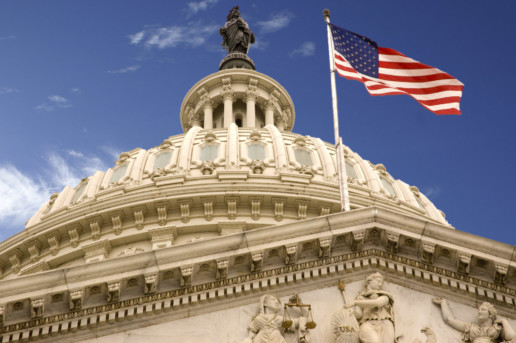How to create a strong communication plan for open enrollment
What is your communication plan for open enrollment? Now that you have your plan changes locked in, it's time to focus on communicating those changes to your employees. Read this blog post to learn more.
Ready or not… the Benefits Super Bowl is here! Whether you are a broker, benefits manager or anywhere in between, you have been knee-deep on plan updates, rate reviews and benefit changes for months. Now that the plan changes are locked, it’s go-time! The focus is now on communicating and educating employees about their benefit options.
It takes an enormous amount of planning and execution to provide a productive open enrollment experience for employees. But, it is well worth it as this is often the only time during the year that employees stop to consider their benefit options.
Learn from past wins and misses
Consider previous years’ open enrollment communications and ask yourself the following:
- What is the feedback you received from employees (the good, the bad and the ugly)?
- What were the most common questions?
- Were there key pieces of information employees had difficulty finding?
Learn from the answers to these questions and then craft your content in a clear and concise manner that is easier for employees to digest.
The communication medium is key to your success
Now that you’ve developed the content to communicate, the next equally important step is determining how, when and where you deliver this information. Is there a centralized location where employees can find information for both core and voluntary benefits? Is the information in a format that the employee can easily share with his or her significant other?
It is critical to have multi-channel communications to reach your audience. Some employees may naturally gravitate to a company-wide email and the company intranet, while others lean on more interactive mediums like E-books, text messages, webinars or lunch and learns. Providing a variety of communication avenues ensures you are reaching employees where they want to receive information.
Make sure your communications campaign provides educational materials at each of the key milestones during the open enrollment journey–such as prior to enrollment, midway through enrollment, and right before enrollment closes. Wherever possible, always support employees through the process and give them options to reach out for help.
How to communicate the same benefits to a diverse workforce
You are likely communicating to a group of employees with diverse needs and wants. What may be appealing to an entry-level recent grad may not resonate with a senior-level employee nearing retirement. For example, employees with young children may be especially interested in accident insurance or pet owners might look to pet insurance to help offset the costs of well-visits and routine care. If possible, tailor your communications to different segments of the employee population.
Communicating voluntary health-related benefits
Core medical benefits are what employees gravitate to during the enrollment period. Are you offering voluntary benefits to employees? The most successful voluntary benefit programs are positioned next to core medical plans on the enrollment platform. This shows employees how those voluntary benefits (critical illness, accident insurance and hospital indemnity) complement the core offerings with extended protection.
When voluntary benefit programs are positioned as an integral part of the employee benefits experience, employees are more likely to understand the value and appreciate the support provided by their employer. For example, a critical illness program can help to bridge the gap of a high-deductible health plan in the case of a covered critical condition. Communicate that voluntary benefits can be an integral part of a “Total Rewards Package” and can contribute to overall financial wellness.
Review and refine
Finally, don’t miss your opportunity at the end of enrollment to review how your communication campaign performed. Pull stats and analyze your communication campaign for next year’s open enrollment… it is never too early to start! HR managers can glean valuable information and metrics from the employee experience.
SOURCE: Marcia, P. (1 November 2018) "How to create a strong communication plan for open enrollment" (Web Blog Post). Retrieved from https://www.benefitspro.com/2018/11/01/how-to-create-a-strong-communication-plan-for-open/
Civic time off: The benefit getting employees to the polls
Does your organization offer civic time off as an employee benefit? Some companies are looking to change low voter engagement by offering new benefits to employees who vote. Read on to learn more.
Voter engagement for midterm engagement historically has been poor. Some companies are offering new benefits to change that — even offering the day off to encourage employees to vote.
American employers that provide paid time off stands at about 44%, a record high, according to the latest research from the Society for Human Resource Management survey. The human resource organization estimates 29% of these companies offer employers more than an hour or two of voting time.
Despite such accommodations, about 60% of Americans didn’t vote in the last midterm election, according to research by Vote.org, a voters’ advocacy organization. The biggest obstacle to voting was scheduling conflicts; 35% of people said they couldn’t vote because of work and school.
“There’s no federal protection for voting leave for employees, which means it’s up to the states to set their own policies. Policies are inconsistent, but some states have no laws at all,” says Colette Kessler, director of partnerships at Vote.org. “This puts employers in a powerful position to enable employees to get to vote.”
But as more Americans prepare to head to the polls for key elections in 46 states, employers including Patagonia, Zenefits and Honest Tea, are opting to give employees paid time off to make their voice heard.
Outdoor retailer Patagonia, for instance, is closing its stores as well as its headquarters and distribution and customer-service center to give employees paid time off to vote. “No American should have to choose between a paycheck and fulfilling his or her duty as a citizen,” Patagonia CEO Rose Marcario wrote in a company blog post.
Meanwhile, human resource software company Zenefits implemented a new program in which employees can take time off to vote the same way they would for a doctor’s appointment. Voting won’t cut into their sick days, vacation time or paid time off. Instead, voting gets its own designation — civic time off, or CTO. That free time can be used for voting, volunteering for a candidate, attending a school board meeting or canvassing.
“Civic time off is a new concept for the industry, and we’re excited to be among the first to offer such a benefit,” says Beth Steinberg, chief people officer at Zenefits, in a letter on the company blog. “At Zenefits, it’s been a priority to help build our team’s skill set not only as it pertains to professional career growth, but also to encourage their development outside of the workplace as engaged and empowered citizens.”
Vote.org consults with companies interested in implementing a CTO program. Based on individual business models and company culture, the organization will suggest either full days off, half days or flexible scheduling.
“One benefit we’re really excited about is offering employees a half day. It gives employees the ability to get to their polling places and do their morning routine — like getting the kids to school and running errands,” Kessler says. “And later they can convene with colleagues and celebrate Election Day. We’re seeing HR teams create afternoon lunch parties to celebrate.”
Kessler says some companies are hesitant to provide time off for voting because they’re worried about losing productivity. However, most of the companies she’s worked with have been enthusiastic about providing their workforce with time off to vote.
“We don’t see any drawbacks to offering our employees flexibility on Election Day,” says Seth Goldman, co-founder and CEO emeritus of beverage company Honest Tea, which allows its 50 employees to take a few hours of paid time off go to the polls on Election Day, at their convenience. “It’s a right we all should be proud to recognize and support however we can.”
SOURCE: Webster, K. (5 November 2018) "Civic time off: The benefit getting employees to the polls" (Web Blog Post). Retrieved from: https://www.employeebenefitadviser.com/news/civic-time-off-the-benefit-getting-employees-to-the-polls?feed=00000152-a2fb-d118-ab57-b3ff6e310000
Predictive Analytics Will Be The Silent Game-Changer In Employee Benefits
Employers can now use their own data to help fine-tune their employer-sponsored benefits packages. Continue reading to learn how this technology could be used to help fine-tune employee benefits offerings.
Last year’s World Series between the Houston Astros and the Los Angeles Dodgers came down to a seven-game battle based not only on talent, athleticism and coaching but also on data. Just as Sports Illustrated suggested back in 2014 via predictive data, the Astros were the victors.
The publication of Moneyball: The Art of Winning an Unfair Game spurred not only Major League Baseball teams to deploy predictive analytics, but also businesses to take a harder look at what their data means. It's no longer part of the hype cycle: Statista forecasts (paywall) that the predictive analytics market worldwide will reach $6.2 billion in 2018 and $10.95 billion in 2022.
I believe we are also at a transformational point in improving corporate employee benefits and our employees’ lives by embracing predictive analytics. HR is swimming in rich data. Instead of guesstimating needs across multiple generations of employees, employers can turn to their own data to fine-tune what they are offering as benefits solutions. Companies spend 25-40% of an employee’s salary on benefits. It simply makes strategic and financial sense to get it right.
Bring Employee Benefits Out Of The Dark Ages
Hiring and retaining great talent is at the very soul of almost every company’s strategy. Not surprisingly, more companies have turned to predictive analytics to give them a leg up in recruitment. However, HR benefits have lagged behind. As John Greenwood reported to Corporate Adviser, “More than half of reward and employee benefits professionals see predictive analytics as a game-changer, but 90 percent are still using spreadsheets to manage data, research from the Reward & Employee Benefits Association shows.”
One reason for benefits lagging behind recruitment in adopting predictive analytics is that the way companies choose new benefits varies greatly from business to business. Given that the majority of HR departments keep data in disparate spreadsheets, even if some HR departments conduct employee surveys or historical cost analyses, they often do not integrate the data about their workforce. If a new benefit offering is chosen based on a needs analysis, only some know the “why” behind a request from the workforce. Knowing how many employees are logging into a benefits platform is helpful; market standard benefit utilization reports provide this level of information. Yet they do not give insight into the underlying reason for an employee to utilize a benefit. The user of deeper analytics is required to look deeper into employees' behavior.
We have found firsthand that many HR departments do not have a full understanding of how their employees are utilizing their benefits across the entire offering suite. A one-size-fits-all or a one-off strategy no longer is effective. Companies must understand not only their employees’ needs but also the underlying data related to these needs to provide a valuable benefits offering.
Put Your Existing Data To Use
For the past five years, I have watched our clients glean valuable insights into what the real underlying issues are for their employees and what must be done to address these pressing needs. I also have been watching companies realize that what they thought were the core problems at hand sometimes were not.
For example, one of our national high-tech clients, with over 50,000 benefit-eligible employees, believed that a high number of their employees had children struggling with autism. This belief was initially based on input from some of their employees. After approximately 16 months, the client reviewed the masked utilization data from their benefit platform. The data illustrated that the overwhelming majority of employee families (tenfold) in fact faced challenges associated with youth anxiety, a concern that had never been expressed to HR previously. Once they reviewed what employees were doing within our platform, their results mirrored the National Institute of Mental Health’s report that approximately 31.9% of U.S. children ages 13-18 struggle with anxiety disorders.
Their own data helped them understand much more specifically where their employees’ stress lay, and their HR department was able to focus communications around it.
Getting Started
Mining and viewing use data across all benefits is ideal. This enables an employer to determine if the benefit suite is serving employees effectively. We have found that as quickly as year over year, users' behaviors shift. If a company solely chooses a benefit based on what they saw as most heavily utilized the previous year, they are not being strategic.
For that reason, HR should utilize past and current data to better predict future patterns of need for a truly strategic approach to benefit choice. With this insight, they can make better choices and serve their workforce more effectively.
Given the limitations across many employee benefit vendors today, to start initially:
1. Embrace KPIs. Agree upon them internally, and measure benefit vendors on them.
2. Work with your current vendors to determine what data they provide to support your internal analysis. Ensure you have access to all the data you need, and if not, consider a vendor change.
3. Hold possible new vendors to similar data standards, and create a transparent relationship from the start.
4. Collect current and historical data. Existing vendors can provide this history, so make sure to collect at least 2-3 years of information.
These analytics need to go deeper than basic demographics to show patterns of activity. In order to understand the benefit needs of your workforce, you'll want to analyze trends across multiple data sets: medical, pharmacy, worker's compensation, biometric screenings, utilization patterns, FMLA requests and demographic trends. From there, you can start to pinpoint what your employees need -- and the “whys” behind the needs -- in order to make a measurable impact.
While predictive analytics is still in the nascent phase in the benefits and vendor worlds, the easiest and most proactive thing any employer can do is to focus on other insights vendors can provide related to the workforce and benefit use beyond simple utilization. In doing so, you will be able to support your employees both in their work lives and their personal lives by providing them with the benefits they need to be at their best.
SOURCE: Goldberg, A. (2 October 2018) "Predictive Analytics Will Be The Silent Game-Changer In Employee Benefits" (Web Blog Post). Retrieved from: https://www.forbes.com/sites/forbestechcouncil/2018/10/02/predictive-analytics-will-be-the-silent-game-changer-in-employee-benefits/#26648166e182
IRS bumps up 401(k) contribution limit for 2019
Do you offer a retirement plan to your employees? The IRS recently raised the annual contribution cap for 401(k) and other retirement plans. Continue reading to find out what the new contribution caps are.
Participants in 401(k) and other defined contribution retirement accounts will see their annual contribution cap raised from $18,500 to $19,000 in 2019, according to the Internal Revenue Service.
The catch-up contribution limit on defined contribution plans remains unchanged at $6,000.
Savers with IRAs will see the annual contribution cap raised from $5,500 to $6,000 — the first time the cap on IRA deferrals has been raised since 2013. The annual catch-up contribution for savers age 50 and over will remain at $1,000.
Cost-of-Living Adjustment (COLA) increases will also be applied to the deduction phase-out scale for IRA owners who are also covered by a workplace retirement plan:
- for single filers the scale will be $64,000 to $74,000, up $1,000
- for joint filers where the spouse contributing to an IRA is also covered by a workplace plan, the phase-out slot increase to $103,000 to $123,000
- for an IRA contributor whose spouse is covered by a plan, the income phase-out is $193,000 to $2003,000
Single contributors to Roth IRAs will see the income phase-out range increase to $122,000 to $137,000, up $2,000 from last year. For married couples filing jointly the range will increase to $193,000 to $203,000, up $4,000 from last year.
More low and moderate-income families may be able to claim the Saver’s Credit on their tax returns for contributions to retirement savings plans. The threshold increases $1,000 for married couples, to $64,000; $48,000 for head of households, up $750; and $32,000 for singles and single filers, up $500 from last year.
The deferred compensation limit in defined contribution plans for pre-tax and after-tax dollars will increase $1,000, to $56,000. And the maximum defined benefit annual pension will increase $5,000, to $225,000.
SOURCE: Thornton, N. (1 November 2018) "IRS bumps up 401(k) contribution limit for 2019" (Web Blog Post). Retrieved from https://www.benefitspro.com/2018/11/01/irs-bumps-401k-contribution-limit-for-2019/
How data science can help employers build better benefit plans
New approaches to data science are now allowing companies to have many different definitions of data and have them all coded. Read on to learn how data science can help you build a better benefits plan.
Is your data management system overdue for an overhaul? Benefit plan sponsors don’t need to feel stuck with old systems requiring hours of manual data entry, according to Marc Rind, chief data scientist for ADP.
“I’ve been in data for a long time,” he says. “For generations, the traditional data management approach has been people having to standardize data.”
But people in different companies — even different departments of the same company – could have different definitions and means of data. An organization’s governance team would have to come up with one definition for everyone to adhere to.
With new approaches to data science, Rind says, “you’re able to have many different definitions of your data and have them all coded. It’s not about governing the definition of data but more about enhancing and publishing that data.”
With data science, employers and those in HR can see trends much more easily using automated mapping and search capabilities. This will allow them to see trends over time, like what people are choosing for their benefit plans and how benefits impact employee productivity and engagement.
“It builds context around the data,” Rind says. “For employers, they have to not only understand which benefit offerings they have to offer to employees but the effect on retention. They can also see what similar employers are offering and if they are getting higher retention rates.”
Employees can use the data to see what benefits others with similar backgrounds have chosen to get, helping them decide what their perfect healthcare plan looks like. However, they cannot yet see how satisfied people similar to them were with these benefits. Rind says that this feedback loop is important, and will become more prominent for the next generation of data science systems.
SOURCE: Spiezio, C. (16 June 2016) "How data science can help employers build better benefit plans" (Web Blog Post). Retrieved from https://www.benefitnews.com/news/how-data-science-can-help-employers-build-better-benefit-plans
9 Simple Ways to Deal With Stress at Work
The Centers for Disease Control and Prevention reports that 29 to 40 percent of Americans are extremely stressed at work. Read this blog post for nine simple ways to deal with stress at work.
According to research, the percentage of Americans who are stressed at work is high, and it’s only getting higher. According to the CDC’s National Institute of Occupational Safety and Health, studies have found the number of Americans who are “extremely stressed at work” range between 29 percent to 40 percent.
Unfortunately, work stress has significant health consequences that range from the relatively benign—more colds and flus—to the more serious, like heart disease and metabolic syndrome. But, because stress at work is so common, finding a low-stress job may be difficult or impossible for many people. A more realistic choice would be to simply adopt more effective strategies to reduce stress at work. Here are some stress management techniques to try.
Start Your Day Off Right
After scrambling to get the kids fed and off to school, dodging traffic and combating road rage, and gulping down coffee in lieu of something healthy, many people come in already stressed, and more reactive to stress at work. In fact, you may be surprised by how much more reactive to stress you are when you have a stressful morning. If you start off the day with good nutrition, proper planning, and a positive attitude, you may find the stress of the workplace rolling off your back more easily.
Be Clear on Requirements
A factor that contributes to job burnout is unclear requirements. If you don’t know exactly what’s expected of you, or if the requirements keep changing with little notice, you may find yourself much more stressed than necessary. If you find yourself falling into the trap of never knowing if what you’re doing is enough, it may help to have a talk with your supervisor and go over expectations, and strategies for meeting them. This can relieve stress for both of you!
Stay Away From Conflict
Because interpersonal conflict takes a toll on your physical and emotional health, and because conflict among co-workers is so difficult to escape, it’s a good idea to avoid conflict at work as much as possible. That means don’t gossip, don’t share too many of your personal opinions about religion and politics, and try to steer clear of colorful office humor. Try to avoid those people at work who don’t work well with others. If conflict finds you anyway, learn how to deal with it appropriately.
Stay Organized
Even if you’re a naturally disorganized person, planning ahead to stay organized can greatly decrease stress at work. Being organized with your time means less rushing in the morning to avoid being late and rushing to get out at the end of the day. Keeping yourself organized means avoiding the negative effects of clutter, and being more efficient with your work.
Be Comfortable
Another surprising stressor at work is physical discomfort. You may not notice the stress you experience when you’re in an uncomfortable chair for a few minutes. But if you practically live in that chair when you’re at work, you can have a sore back and be more reactive to stress because of it. Even small things like office noise can be distracting and cause low-grade frustration. Do what you can to ensure that you’re working from a quiet, comfortable and soothing workspace.
Forget Multitasking
Multitasking was once heralded as a fantastic way to maximize one’s time and get more done in a day. Then people started realizing that when they had a phone in their ear and were making calculations at the same time, their speed and accuracy (not to mention sanity) suffered. There is a certain kind of frazzled feeling that comes from splitting one’s focus that doesn’t work well for most people. Rather than multitasking, try a new strategy known as chunking.
Walk at Lunch
Many people are feeling ill effects from leading a sedentary lifestyle. One way you can combat that, and manage stress at work at the same time, is to get some exercise during your lunch break and perhaps take short exercise breaks throughout the day. This can help you blow off steam, lift your mood, and get into better shape.
Keep Perfectionism In Check
Being a high achiever can help you feel good about yourself and excel at work. Being a perfectionist, on the other hand, can drive you and the people around you a little nuts. Especially in busy, fast-paced jobs, you may not be able to do everything perfectly. But striving to just do your best and then congratulating yourself on the effort is a good strategy. Your results will actually be better and you’ll be much less stressed at work.
Listen to Music on the Drive Home
Listening to music brings many benefits and can offer an effective way to relieve stress after work. Combating the stress of a long day at work with your favorite music on the drive home can make you less stressed when you get home, and more prepared to interact with the people in your life.
SOURCE: Scott, E. (12 November 2018) "9 Simple Ways to Deal With Stress at Work" (Web Blog Post). Retrieved from https://www.verywellmind.com/how-to-deal-with-stress-at-work-3145273
Healthcare waste is costing billions — and employers aren’t doing anything about it
Providing your employees with healthcare insurance is expensive. A large chunk of healthcare costs is being wasted by the healthcare industry, according to a new survey. Read on to learn more.
Providing the workforce with healthcare coverage is expensive, but a new survey of 126 employers suggests a large chunk of that cost is being wasted by the healthcare industry on treatments patients don’t need.
The healthcare industry wastes $750 billion per year on unnecessary tests and treatments, according to a survey from the National Alliance of Healthcare Purchaser Coalitions and Benfield, a market research, strategy and communications consulting firm. Some 60% of employers don’t take steps to manage their healthcare plan’s wasteful spending, despite the fact that the same percentage of employers view it as a problem, the survey says.
“While waste has long been identified as a key concern and cost contributor, employers are operating blind and need to look at a more disciplined approach to address top drivers that influence waste,” says Michael Thompson, National Alliance president and CEO.

Employers are under the impression that prescription drugs are the culprit behind the spending waste, and they are, just not as much as other services. Around 54% of health spending waste is caused by unnecessary medical imaging tests, such as MRIs and X-rays, the survey says. Specialty drugs, unnecessary lab tests and specialists referrals are also major money pits.
However, the survey data isn’t suggesting these procedures and treatments shouldn’t be covered by employer health plans. The tests and treatments are potentially life-saving, they’re just used more than they should be. Sometimes previous test results can help with a current diagnosis, but medical staff don’t always check patient files before ordering new tests.
Most employers don’t monitor unnecessary healthcare spending. The 34% of employers who do rely entirely on their healthcare vendors to do it for them, trusting that it’s being taken care of.
“The idea of reducing waste in the healthcare system can be overwhelming,” says Laura Rudder Huff, senior consultant for Benfield. “While employers ask themselves: ‘Where to start?’ this is an issue where even small steps matter. Employers can begin by collecting data to identify where the inefficiencies are in their workforce and community and use assets such as vendors and organizations like coalitions to realize market improvements.”
The survey also recommends employers enlist the services of Choosing Wisely, an organization that counsels patients and employers on healthcare plans and medical treatments.
This article originally appeared in Employee Benefit Adviser.
SOURCE: Webster, K. (7 November 2018) "Healthcare waste is costing billions — and employers aren’t doing anything about it" (Web Blog Post). Retrieved from https://www.benefitnews.com/news/healthcare-waste-is-costing-billions-and-employers-arent-doing-anything-about-it
8 scary benefits behaviors employees should avoid
Nothing is more scary to benefits professionals than employees failing to review their open enrollment materials. Continue reading for eight of the scariest benefit mistakes and tips on how you can correct them.
Halloween is already frightening enough, but what really scares benefits professionals are the ways employees can mishandle their benefits. Here are eight of the biggest mistakes, with tips on correcting them.
Participants don’t review any annual enrollment materials
Why it’s scary: Employees are making or not making decisions based on little or no knowledge.
Potential actions: Employers can implement a strategic communications campaign to educate and engage employees in the media and format appropriate for that employee class, or consider engaging an enrollment counselor to work with participants in a more personalized manner.
Employees don’t enroll in the 401(k) or don’t know what investment options to choose
Why it’s scary: U.S. employees are responsible for much of their own retirement planning and often leave money on the table if there is an employer match.
Potential actions: Employers can offer auto-enrollment up to the matching amount/percent; consider partnering with a financial wellness partner, and provide regular and ongoing communications of the 401(k)’s benefits to all employees.
Employees don’t engage in the wellness program
Why it’s scary: The employee is potentially missing out on the financial and personal benefits of participating in a well-being program.
Potential actions: Employers need to continuously communicate the wellness program throughout the year through various media, including home media. Employers also should ensure the program is meeting the needs of the employees and their families.
Employees don’t update ineligible dependents on the plan
Why it’s scary: Due to ambiguity where the liability would reside, either the employee or the plan could have unexpected liability.
Potential action: Employers can require ongoing documentation of dependents and periodically conduct a dependent audit.
Employees don’t review their beneficiary information regularly
Why it’s scary: Life insurance policy proceeds may not be awarded according to the employee’s wishes.
Potential action: Employers can require beneficiary confirmation or updates during open enrollment.
Employees do not evaluate the options for disability — whether to elect a higher benefit or have the benefit paid post-tax
Why it’s scary: Disability, especially a short-term episode, is very common during one’s working life; maximizing the benefit costs very little in terms of pay deductions, but can reap significant value when someone is unable to work.
Potential action: Employers can provide webinars/educational sessions on non-medical benefits to address those needs.
Employees do not take the opportunity to contribute to the health savings account
Why it’s scary: The HSA offers triple tax benefits for long-term financial security, while providing a safety net for near-term medical expenses.
Potential actions: Employers can select the most administratively simple process to enroll participants in the HSA and allow for longer enrollment periods for this coverage.
Employees do not use all of their vacation time
Why it’s scary: Vacation allows an employee an opportunity to recharge for the job.
Potential actions: Employers can encourage employees to use their vacation and suggest when the workload might be more accommodating to time off for those employees who worry about workloads.
SOURCE: Gill, S. & Manning-Hughes, R. (31 October 2018) "8 Scary Benefits Behaviors Employees Should Avoid" (Web Blog Post). Retrieved from https://www.benefitnews.com/slideshow/8-scary-benefits-behaviors-employees-have?brief=00000152-14a5-d1cc-a5fa-7cff48fe0001
3 steps to negotiating a better employee benefit annual renewal
Do you know how to negotiate your annual employee benefits renewal? Employee benefits are commonly the second-highest expense for employers, coming in second behind employee payroll. Read on to learn more.
Employee benefits are typically the second-highest expense for employers — right behind payroll. But unlike payroll, benefits are difficult to budget for each year because the upcoming annual renewal rate can feel like a total mystery.
Not knowing what the renewal rate will be until the end of the plan year complicates the balance that employers must strike between offering rich benefits employees appreciate at a cost the finance team can live with. It doesn’t have to be that way.
Knowing how to approach the annual renewal with your health carrier, pharmacy benefits manager and other players can help the savvy employer save some money while maintaining the same level of benefits as before. The ticket is planning for the annual renewal all year long, which removes the mystery and leads to a predictable rate.
Here are three steps to negotiating the annual renewal with your carrier.

1. Create a good carrier relationship. A great way to gain control of what happens at the end of the benefit plan year is to set the tone from the beginning. This means outlining expectations before signing a contract and communicating wants and needs throughout the plan period. If you’ve developed a good relationship with your carrier, you should have an easier time coming to an agreement on the annual renewal rate.
Building good carrier relationships extends beyond the carrier you’re currently working with to others in the market. One way to maintain a good relationship is to avoid marketing to all carriers for the best rate before each renewal period. Carriers spend time and money responding to requests for proposal (RFPs); if they respond year after year without winning the business, they may lose interest when you are ready to move your benefits plan.
2. Get plan renewals early. Left unchecked, most carriers hold the benefit plan renewal rate as long as possible (60-75 days before the end of a contract). But receiving your carrier’s initial renewal rate earlier gives you more time to evaluate the renewal and negotiate the rate. (Yes, it’s true — you don’t have to accept the first number the carrier offers.) The best way to ensure your request for an early renewal rate is heard and followed is to discuss it before signing a contract.
By receiving your renewal rate approximately 120 days before the end of your contract, you have enough time to evaluate the rate together with your health and welfare benefits broker and underwriting team and then respond with another offer. And if you feel that another carrier can offer better rates, you can also market your benefits plan and still have time to switch carriers before the contract ends.
3. Offer a fair and reasonable rate. After you receive your annual renewal rate, work with your internal team and your benefits broker to begin negotiations. Importantly, this doesn’t mean countering with a number so low that the carrier finds it untenable and unreasonable. In that case, the insurer may not meet your demand and you’ll be forced to turn to other carrier options without having planned for that possibility.
Instead, respond with a fair and reasonable rate increase backed by data. The goal is to counter offer with a number that creates stability and predictability for renewals in the future.
Learning your renewal rate for each plan year can be stressful, but it doesn’t have to be. Getting information early, negotiating a fair rate and maintaining good carrier relationships can help you create a better annual renewal with better predictability and improved budgeting year after year.
SOURCE: Strain, M (24 October 2018) "3 steps to negotiating a better employee benefit annual renewal" (Web Blog Post). Retrieved from https://www.employeebenefitadviser.com/opinion/3-steps-to-negotiating-a-better-employee-benefit-annual-renewal?brief=00000152-1443-d1cc-a5fa-7cfba3c60000
5 things small business owners should know about this year's open enrollment
The benefits small business owners offer are crucial to the way they attract and retain employees. Read this blog post for five things small business owners should know for 2019 open enrollment.
As a small business owner, offering competitive employee benefits is a crucial way to attract and retain strong talent. Whether you currently provide them and are planning next year’s renewal, or you are thinking of offering them for the first time, here are five things you should consider before your employees enter the open enrollment period for next year on November 1st:
1. Small businesses don’t have to wait until open enrollment to offer benefits to their employees
While your employees won’t be able to enroll in health insurance plans until November comes along, small business owners don’t have to wait at all to secure health insurance for their employees. The sooner you act, the better, to guarantee that you and your employees are protected. According to recent studies, healthier employees are happier employees, and as a result, will contribute to a more productive workplace. And a more positive and constructive work environment is better for you, your employees, and your business as a whole.
2. Health literacy is important
Whether you’ve provided health insurance to your employees before, or you’re looking into doing so for the first time, it is always worthwhile to prioritize health insurance literacy. There is a host of terminology and acronyms, not to mention rules and regulations that can be overwhelming to wrap your head around.
Thankfully, the internet is full of relevant information, ranging from articles to explainer videos, that should have you up to speed in no time. Having a good understanding of insurance concepts such as essential health benefits, employer contributions, out-of-pocket maximums, coinsurance, provider networks, co-pays, premiums, and deductibles is a necessary step to being better equipped to view and compare health plan options side-by-side. A thorough familiarization with health insurance practices and terms will allow you to make the most knowledgeable decisions for your employees and your business.
3. Offering health insurance increases employee retention
Employees want to feel like their health is a priority, and are more likely to join a company and stay for longer if their health care needs are being met. A current survey shows that 56 percent of Americans whose employers were sponsoring their health care considered whether or not they were happy with their benefits to be a significant factor in choosing to stay with a particular job. The Employee Benefit Research Institute released a survey in 2016 which showed a powerful connection between decent workplace health benefits and overall employee happiness and team spirit—59 percent percent of employees who were pleased with their benefits were also pleased with their jobs. And only 8 percent of employees who were dissatisfied with their benefits were satisfied with their jobs.
4. Alleviate health insurance costs
High insurance costs can be an obstacle for small business owners. A new survey suggests that 53 percent of American small business owners stress over the costs of providing health care to their employees. The 2017 eHealth report reveals that nearly 80 percent of small businesses owners are concerned about health insurance costs, and 62 percent would consider a 15 percent increase in premiums to make small group health insurance impossible to afford. However, there are resources in place to help reduce these costs, so they aren’t too much of a barrier. One helpful way to cut down on health insurance costs is to take advantage of potential tax breaks available to small business owners. All of the financial contributions that employers make to their employees’ premiums are tax-deductible, and employees’ financial contributions are made pre-tax, which will successfully decrease a small business’ payroll taxes.
Additionally, if your small business consists of fewer than 25 employees, you may be eligible for tax credits if the average yearly income for your employees is below $53,000. It is also beneficial to note that for small business owners, the biggest driver on insurance cost will be the type of plan chosen in addition to the average age of your employees. Your employees’ health is not a relevant factor.
5. Utilize digital resources
You don’t have to be an insurance industry expert to shop for medical plans. There are resources and tools available that make buying medical plans as easy as purchasing a plane ticket or buying a pair of shoes online – Simple, transparent. Insurance is a very complex industry that can easily be simplified with the use of the advanced technology and design of online marketplaces. These platforms are great tools for small business owners to compare prices and benefits of different plans side-by-side. Be confident while shopping for insurance because all of the information is laid out on the table. Technological solutions such as digital marketplaces serve as useful tools to modernize the insurance shopping process and ensure that you and your team are covered without going over your budget.
SOURCE: Poblete, S. (15 October 2018) "5 things small business owners should know about this year's open enrollment" (Web Blog Post). Retrieved from https://www.benefitspro.com/2018/10/15/5-things-small-business-owners-should-know-about-t/










